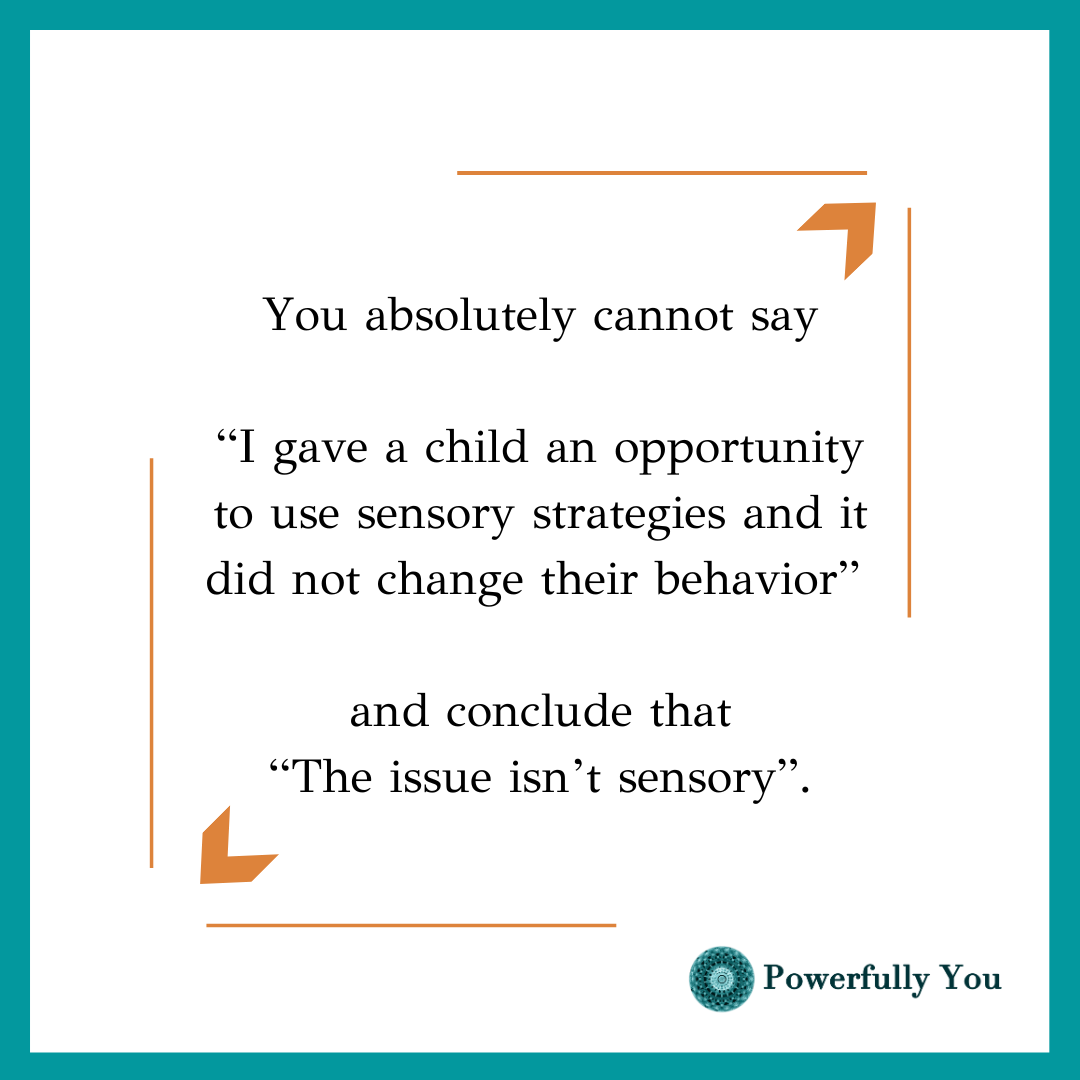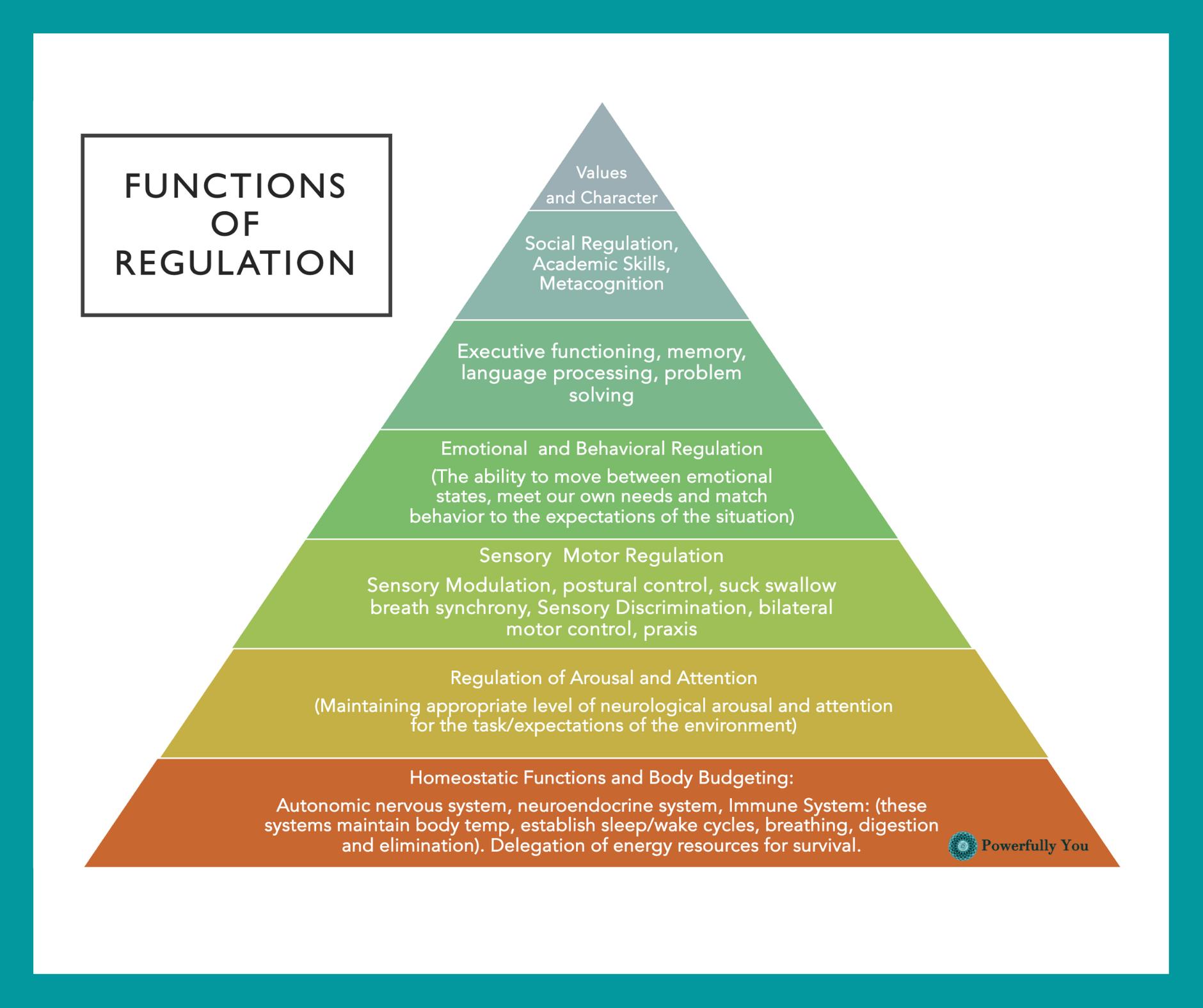
The Blog
An OT answers your questions…

Why is supporting regulation so challenging?
Regulatory capacity underlies all function and meaningful participation. Facilitating regulatory capacity with a layered approach allows us to be responsive to the needs of our client in every moment, meeting them where they are and matching the level of support needed.






Self-Regulation Education: What works?
Self-regulation underlies everything that we do. Educators and parents are becoming increasingly aware of this foundational skill, that therapists have long known contributes to behavior, relationships, and academic success.
Social emotional learning curriculums offer ways to teach children concepts and tools to manage their own regulation. But can the skill of self-regulation be taught in a lesson? The answer is…it depends.


Can social emotional learning and self-regulation interventions prevent violence in schools?
Can social emotional learning and self-regulation interventions prevent violence in schools?
As individuals, we may not be able to bring about gun reform or fix a broken mental healthcare system. But as pediatric helping professionals there are things we can do. Teaching children awareness and regulation through a lens of compassion and connection has the potential to change the world.

What does it mean to be present in the moment? And why is it important?
Spending moments in present moment awareness can decrease the chronic activation of your nervous system, reduce stress, and help you to feel more regulated. When we are more regulated, we can see things more objectively and solve problems from a state that allows us access to our highest level cortical processes.
When we can feel our own feelings without being overwhelmed by them, we have the potential to heal ourselves.
That work might just be the most important work we can do for the world.

“How can we use connection to change behavior?”
Connection is the key to state regulation.

Why do you teach body sensing?
This week we announced our first children’s book Powerfully You: Learning to Notice Body Sensations. We are excited to reach a larger audience with some of the information we teach to Providers of Powerfully You, but we are aware that some of that audience may get the book and wonder “Why do you teach kids body sensing?” and “How will this help my child?”
Being aware of our body sensations increases our ability to recognize what we are feeling, shift our emotions, and choose our behavior.

“I want to work with kids in a way that is compassionate and connected, but HOW do I do that?”
You are your best tool for helping a child to regulate and learn adaptive behaviors.
And, for some of us, learning a few new tools and strategies can be helpful. The first tool I’m going to recommend is self-compassion. I may have lost some of you already because you came here to find out what you are supposed to actually DO with the child in front of you.
I get it.
And I’m going to tell you that behind the emotion you are feeling right now is a thought that you have an opportunity to explore.

“I am burned out. What else can I do for a living?”
How many of us have felt this way and asked ourselves the same question? How many of us feel burnout in the career we once loved, or start to question our worthiness and value as a therapist? I know I certainly have.
Therapists are innately helpers, and we have to do hard things all the time. We keep showing up and being our best therapeutic selves for our families and kiddos, but we don’t have to do this alone.
We have an amazing superpower to connect with our kiddos and families, but even superheroes need connection and a group to feel safe and heard too!

“Is it sensory or is it behavior?”
Occupational Therapists are often asked that question to rule out sensory sensitivities or sensory integration challenges as an underlying cause for a behavior that can’t be explained. On the surface, it is a compassionate question. It allows for the individual differences that come along with sensory challenges, and encourages adults to assume a less judgmental stance on the behaviors they are seeing.
But underneath the question “It is sensory or is it behavior?” is the assumption that if it not “sensory” it is “just behavior”.
It isn’t “just behavior”.
